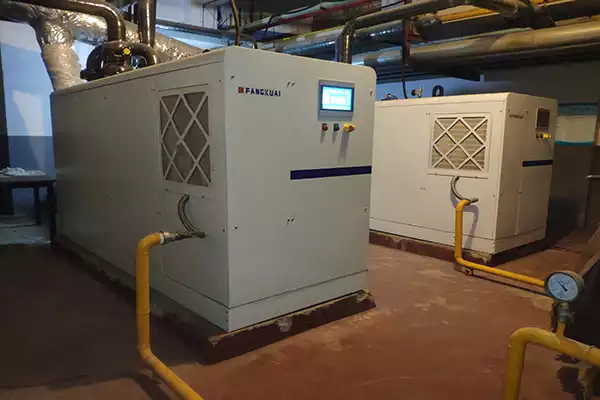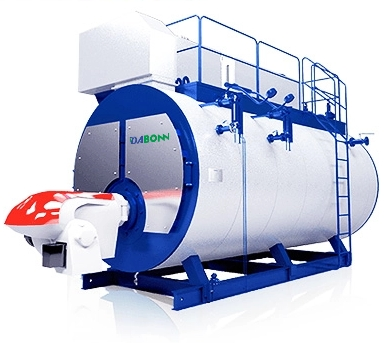
Introduction
When you want to know how to reset a boiler, it’s important that you know why and when it needs to be reset. In this article, we will cover everything that you need to know about resetting a boiler. We will discuss how to reset your boiler, and why it’s important to occasionally do so. And what you can do if your boiler isn’t working correctly after a reset.
Why you might need to reset your boiler?
The most common reason to reset your boiler is if it has not been turned off properly. If you leave home and forget to turn off your heating system, or if someone else does so without informing you. Then this could cause problems with your boiler.
Another common reason for needing to reset a boiler is when there has been a long period of low power usage. The combustion process inside the heat exchanger requires fuel and air in order for it to work properly and produce heat energy. If these are not present then there will be no output from your heating system at all!
The third reason could be if the installer switched off the boiler when they were doing maintenance work on it. Or if they have finished installing it but there’s still something wrong with how it works (such as having no hot water).
Finally, sometimes people do this themselves because they think their system isn’t working properly.
Another reason could be if the installer switched off the boiler when they were doing maintenance work on it, or if they have finished installing it but there’s still something wrong with how it works (such as having no hot water).
Finally, sometimes people do this themselves because they think their system isn’t working properly–but really all they need is just one more step!
When to reset your boiler?
There are many reasons why you may want to reset your boiler, including:
- If it is not turning on or heating at all. This could be due to a number of issues, such as a faulty thermostat or pump.
- If the boiler has stopped working in the middle of a cycle. This could be due to low water pressure, which can cause overheating and damage to internal components if left unchecked for too long.
- If your home has experienced power cuts recently and you’re unsure whether this has affected your heating system’s functionality (e.g. if there was an interruption while it was operating).
How to reset a boiler?
Resetting a boiler is a relatively simple process, but it’s important to follow the steps carefully to ensure everything goes smoothly.
Step 1: Turn Off the Boiler
First things first, you’ll want to turn off the boiler completely. Look for the main power switch or dial on the boiler and flip it to the “off” position. This step is crucial for safety and allows the boiler to reset properly.
Step 2: Locate the Reset Button
Next, find the reset button on your boiler. It’s usually a small button, often colored red, and might be labeled as “reset” or have a circular arrow symbol. The button is typically located near the control panel or on the boiler’s front panel.
Step 3: Press the Reset Button
Once you’ve located the reset button, gently press it. You might need to use a pen or a small tool to reach it comfortably. Hold the button down for a few seconds, usually around 5-10 seconds. This action initiates the boiler’s reset process.
Step 4: Press the On/Off Switch
After you’ve released the reset button, look for the on/off switch or dial, usually found on the control panel as well. Flip it back to the “on” position. By doing this, you’re allowing the boiler to start up again.
Step 5: Wait for the Boiler to Turn On
Now, exercise a little patience. Give the boiler some time to start up and go through its reset sequence. Usually, you’ll hear the boiler firing up, and lights on the control panel may indicate that it’s operational again. The duration can vary depending on the model, but it usually takes a minute or two.
Step 6: Recheck the Boiler’s Settings
Finally, once the boiler has turned on and stabilized, it’s essential to double-check the settings. Make sure the thermostat is set to the desired temperature, and everything looks normal on the control panel. If there were any issues that led you to reset the boiler in the first place, ensure they’re resolved before leaving it unattended.
Remember, if you encounter any unusual sounds, odors, or warning indicators after the reset. It’s best to contact a professional boiler repair service.
The location of your boiler’s reset button varies depending on its make and model. It will typically be located underneath the boiler itself. If you have a digital display unit (DPU), look for an icon that looks like three horizontal lines stacked vertically with one line shorter than the others. This should be near where you plug in your electricity supply cord. If not, check inside your manual or search online for “Where is my boiler reset button?”
Why won’t my boiler turn on after resetting?
If you’ve reset the boiler and it still won’t turn on, there are a few things to check.
Is the reset button still pressed? If not, press it again and wait for the boiler to start up before releasing it.
Is there power going to your boiler? Check that it’s plugged in properly and make sure there aren’t any tripped circuit breakers or blown fuses nearby (you may need an electrician).
Is there gas flowing through your system? You should see a blue pilot light glowing when you first turn on the heat or hot water supply. If not, turn off all other appliances using natural gas (gas stovetops/ovens) until they’re off completely. Then wait 10 minutes before trying again.
Is your boiler overheating? If the temperature of your boiler exceeds 90 degrees Celsius (194 degrees Fahrenheit), then it may be in need of repair or replacement.
Is there nothing blocking its vents and flues? If there is debris or other objects blocking these areas, they could prevent airflow and lead to malfunctioning parts within the system. Including failure of components like pumps and burners which operate at high temperatures for long periods of time.
How do you reset a boiler when the gas runs out?
To reset a boiler, you’ll need to turn off the gas at the meter and then open up a gas cock. You can do this by hand or use a wrench if you have one handy. Then, turn on your boiler and wait for it to come back on. Finally, close off your gas cock again by turning it clockwise until you hear it click into place.
Common reasons boilers stop working.
There are many reasons why a boiler stops working. These include:
A lack of gas is one of the most common reasons boilers stop working. You should check all the connections and make sure the gas company has not disconnected them. Or if there is a problem with the main supply, call them straight away.
The boiler has a leak somewhere in its pipework or tank. This could be due to corrosion or just old age. If you think this might be the case, it’s best to call in a professional repairman.
The boiler has a fault, such as a leak or blockage. This can be caused by debris in the system or an airlock. If your heating system is blocked, you may notice that it takes longer than usual for your home to warm up.
The thermostat is malfunctioning. If your heating system is set too high or too low, it may cause damage to the components inside the system itself. As well as make it difficult for you to control how warm or cool your home is at any given time.
When water levels drop too low, this can cause problems for both heaters and radiators. If not add water to the boiler in time, it may cause damage to the boiler.
Conclusion
I hope this article has helped you understand the basics of how to reset a boiler. It is important that you know how to do it because if your boiler breaks down, you will need to be able to fix it yourself or call someone who can come and help. Make sure that you get the right tools and follow instructions carefully if there are any special circumstances involved with your system.
Get your best price
Quickly compare 3 FREE quotes
- Engineer quick quote
- The overall delivery speed is fast
- Financial choice
- Low installation costs and cost savings
25 years+ of boiler R&D
More than 20 innovative technologies
